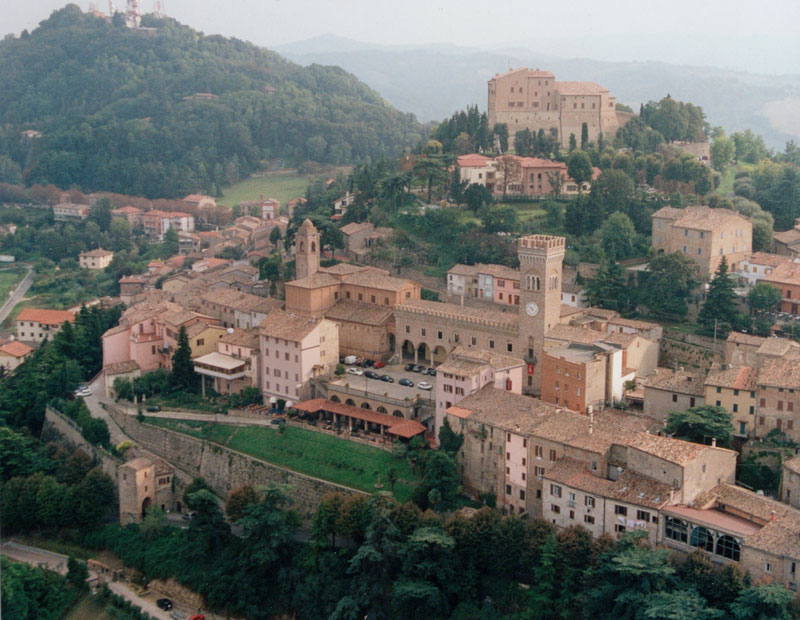Bertinoro
By way of Trinidad, just off the parking lot of Largo Cairoli, take the road of Harvest, which runs
between Trinity Road and Vendemini road.
There is placed a permanent exhibition of paintings and famous artists who developed the theme of
"The Harvest", recounting with their brushes the production of wine grapes since
the plantation until its transformation into "Nectar of the Gods".
Among the seven canvases that represent various stages of winemaking, you will reach Vendemini Road
that brings to an entirely pedestrian way, to the Freedom Square, the heart of town.
At the entrance of the square stands the Cathedral, originally a small chapel dedicated to Saint
Catherine, that was entirely rebuilt in present form at the end of 1500.
Leaning against the adjacent Town Hall, it has no facade. This curious fact is due to the fact that
when the church was built there was the intent to destroy the Town Hall.
However, due to tensions between the Guelphs and Ghibellines that also crossed Bertinoro, this did
not happen.
Bramante's style with three naves, with columns in Ionic style, its interior preserves valuable
works of art, including "the blade of St. Catherine of Alexandria", patron saint of the City of
Bertinoro, and the" wooden crucifix fig ", one piece, dating from the end of 500, which was carved -
so goes the story - from a pilgrim as a thank you for the great hospitality received at Bertinoro.
Noteworthy also is the crypt that has an access from the outside. At the bottom of Freedom Square, a
column of the ring is the symbol of a deeply rooted tradition of hospitality, and is narrated by a
curious anecdote that brings the spirit and attitude that has always been the warm welcome in this
town.
It was the thirteenth century, the families of Bertinoro decided to raise a column in the square
each embedding its own ring.
In this way, strangers, that used to tie here their horses, became not only guests of the family but
of the entire community, in a pleasant atmosphere of hospitality.
In 1570, after the time of the Lords, the Column, now unused, was removed to allow the accommodation
of the aqueduct.
At the beginning of 900, in a niche of the Town Hall were discovered a few pieces of the original
column. By the will of citizenship it was rebuilt in September 5, 1926. Each year the first Sunday
of September, we celebrate the Feast of Hospitality.
In Mura Road there are paintings dedicated to the crafts of the past; the parapet of the road, near
the town below, is what remains of the defensive wall of the walls of Byzantine origin.
Walking along the passage leading to the Tower San Giuseppe, the path ends in the
Piazzetta or Piazza Guido del Duca, the commercial heart of the city, where there
are several shops and cafes.
















